Visiting Chaco Culture National Historical Park
Fall 2023
Report by Melanie Cham (’24)
For Fall Break of 2023, I spent a week living at Chaco Culture National Historical Monument in the four corners region of New Mexico. Situated in a canyon cut by the Chaco Wash stream are ancient structures occupied by the Ancestral Puebloan people between 850 and 1250 CE.1
As a volunteer, I accompanied Paleontologist Assistant Fletcher Levy (Wesleyan Class of ’23 and member of the Environmental Archaeology Lab) in maintaining the conditions of the fossils in the sandstone walls. These fossils are from the time interval 80-75 million years ago during the Late Cretaceous when Chaco Canyon was situated on the edge of an inland sea.2 Therefore, we see a lot of marine fossils.
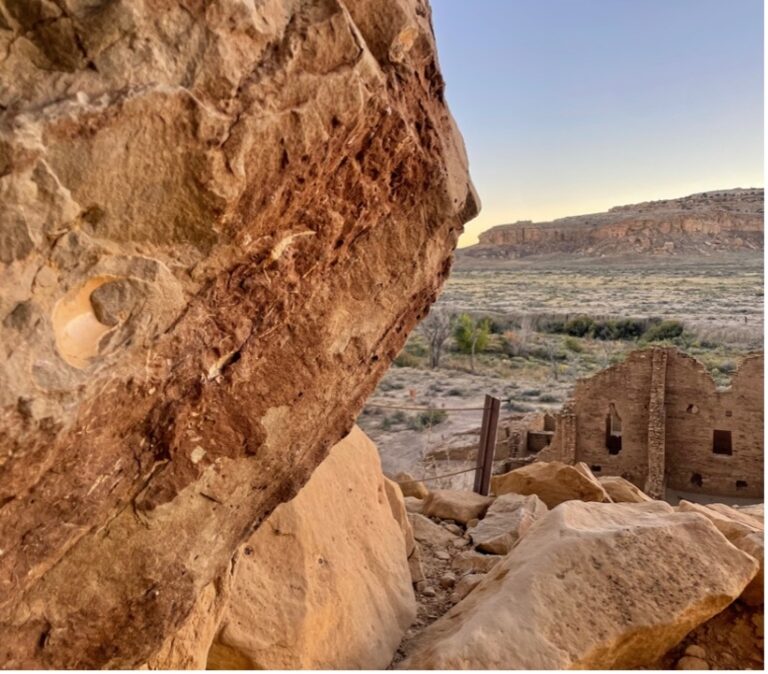
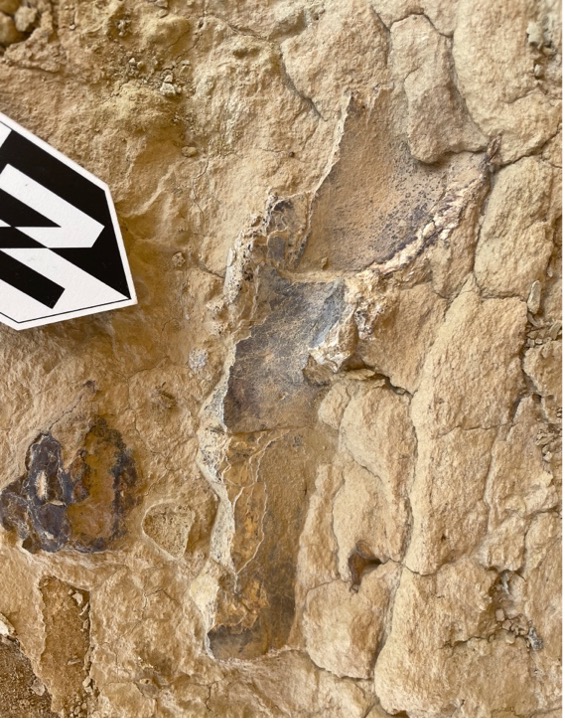
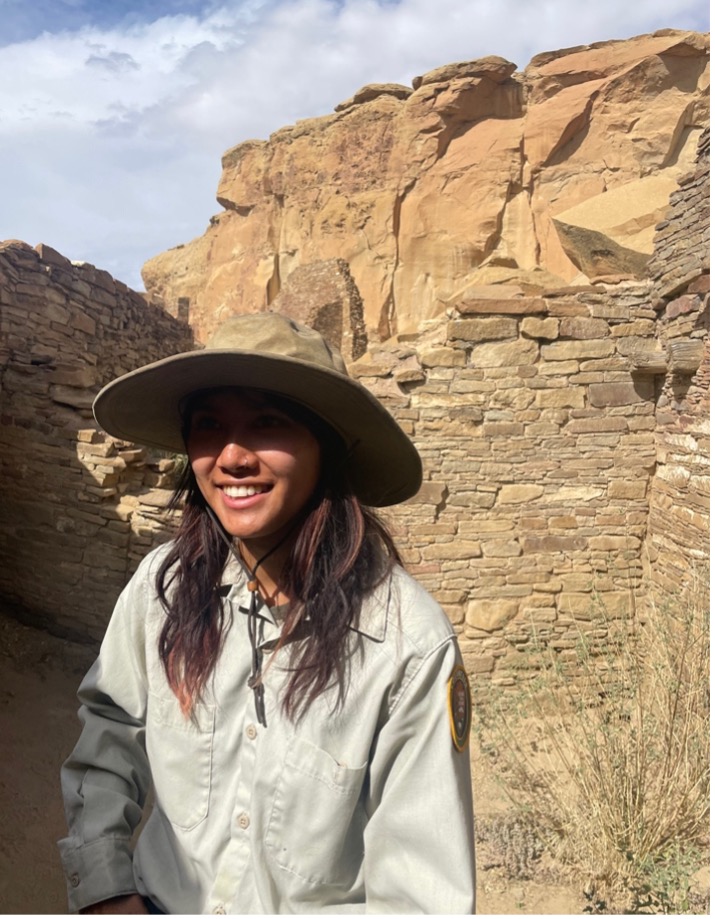
Fossil clam on hike past Kin Kletso.
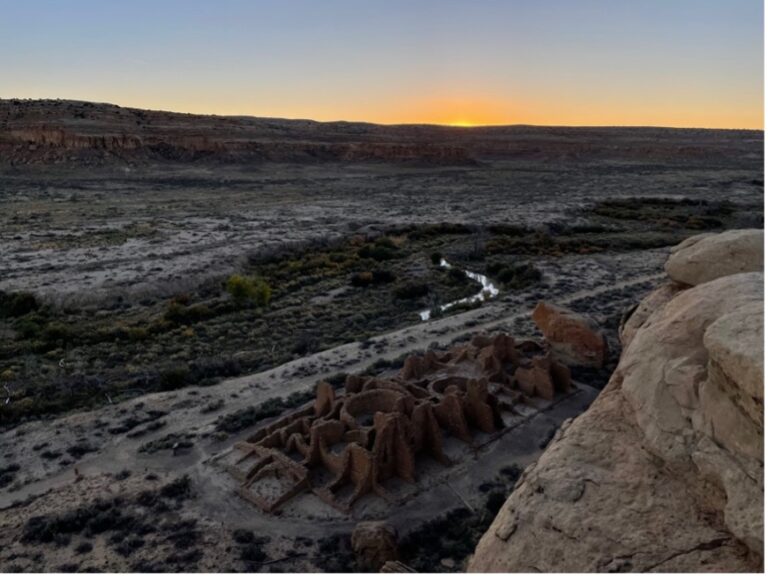
Aerial view from Kin Kletso at sunset.
I also shadowed Archaeologist, Geoscientist, and Geospatial Specialist Joel Gutierrez and Paleontologist Assistant Fletcher Levy in assessing potential damage to the structural integrity of the northern wall of Pueblo Bonito, which has been held up by steel bars since the 1970s.
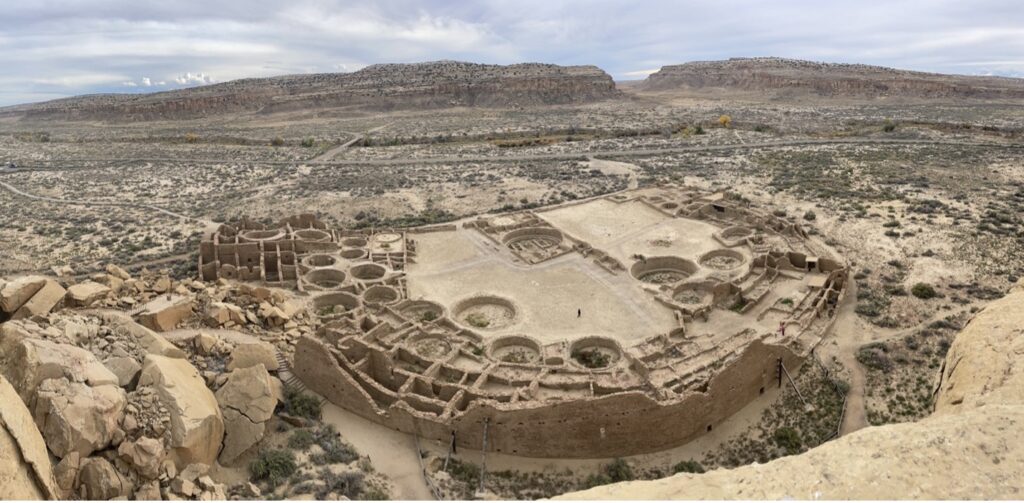
Aerial view of Pueblo Bonito.
To the left, you can see where a section of the canyon known as “Threatening Rock” fell and destroyed a part of the building in 1941.
Waking up every morning in Chaco was awe-spiring.
The structures in Chaco Canyon, also known as Great Houses, are multiple-story stone buildings with hundreds of rooms. Constructions of some of these buildings are estimated to have taken decades or even centuries. Timber was brought in from more than 50 miles away from the Chuska and San Mateo Mountains.3
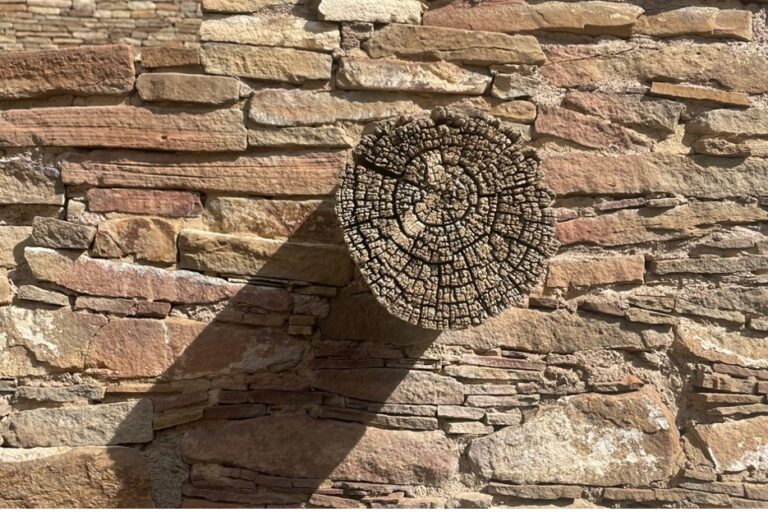
Original wood used as a support beam.
You can also see the stylistic chinking stones used to fill gaps between larger rocks which is prominent in earlier period Puebloan architecture. These structures were often oriented with astronomical markers and cardinal directions.
Casa Rinconada Kiva is above ground and one of the largest known great kivas. A kiva is a circular, typically subterranean space used by Puebloans for rites and meetings. The T-shaped doors on each side are aligned in the North-South directions.
Based on the scale of the Great Houses, Chaco was likely the cultural center for the Ancestral Puebloan society. These sites were a focus for ceremonies, trade, and political activity. Precious objects from far away such as turquoise, copper bells, and macaws were found here.
In the late 1100’s CE, new construction slowed and Chaco’s role as a regional center shifted. The Ancestral Puebloans continued their lives at Aztec, Mesa Verde, the Chuska Mountains, and other centers to the north, south, and west.
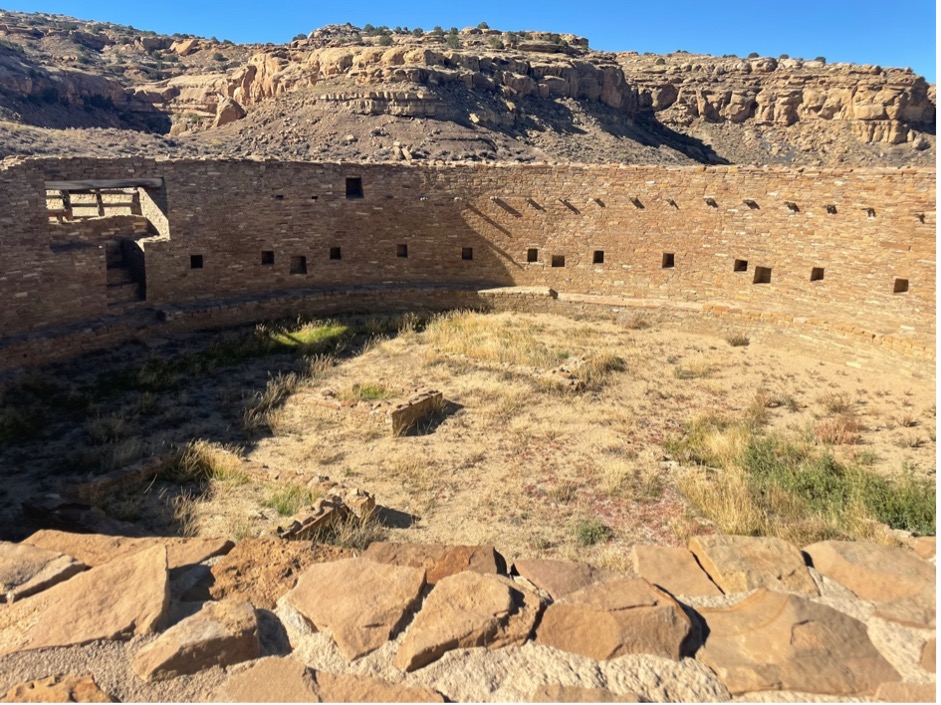
Most sites in Chaco Culture National Historic Park are accessible by car. However, back country hiking is required for Pueblo Alto Complex, Peñasco Blanco, Tsin Kletsin. I would highly recommend taking the petroglyph trail.
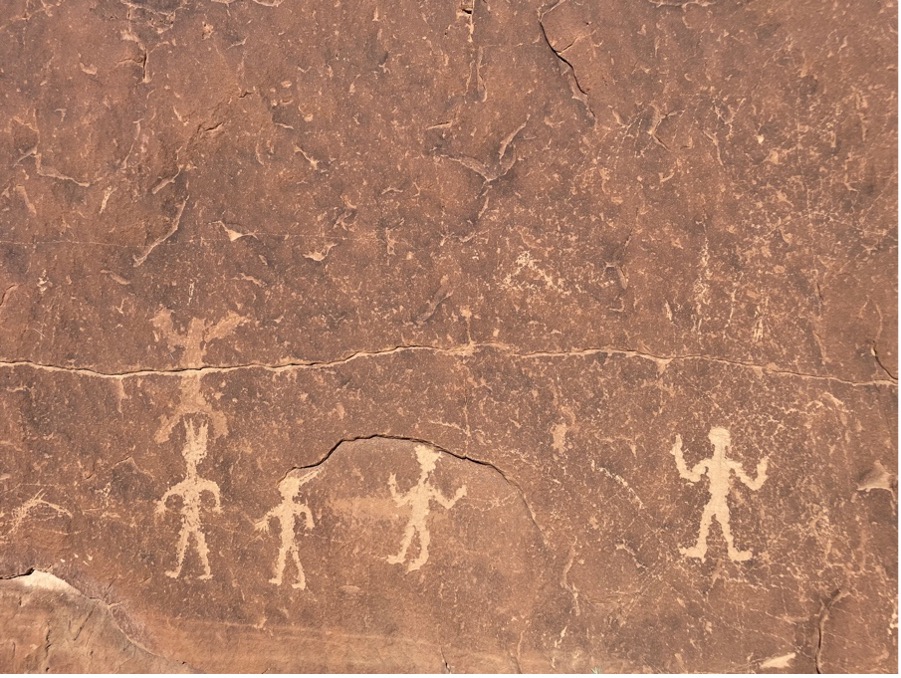
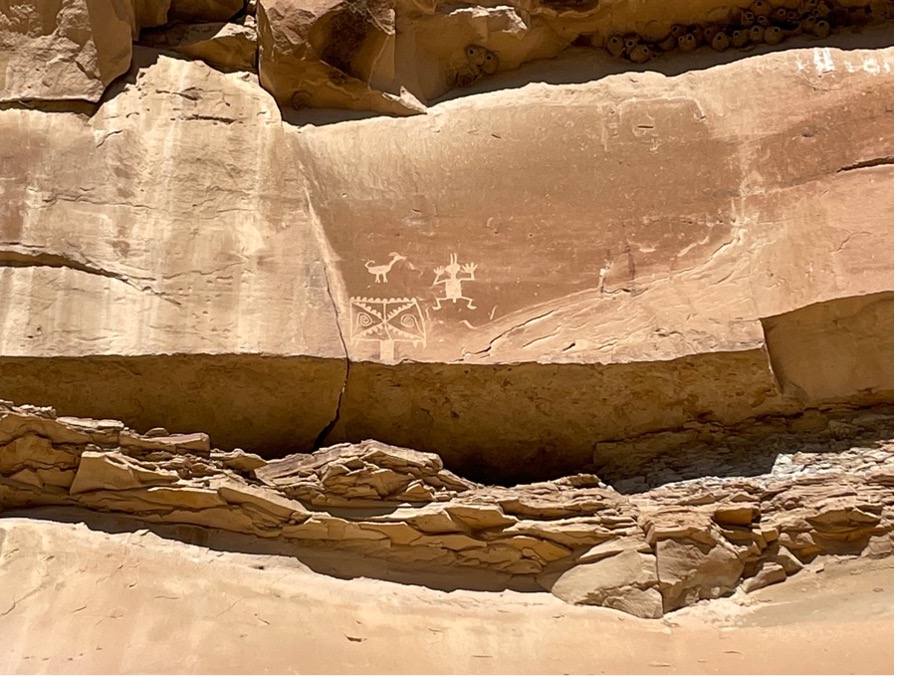
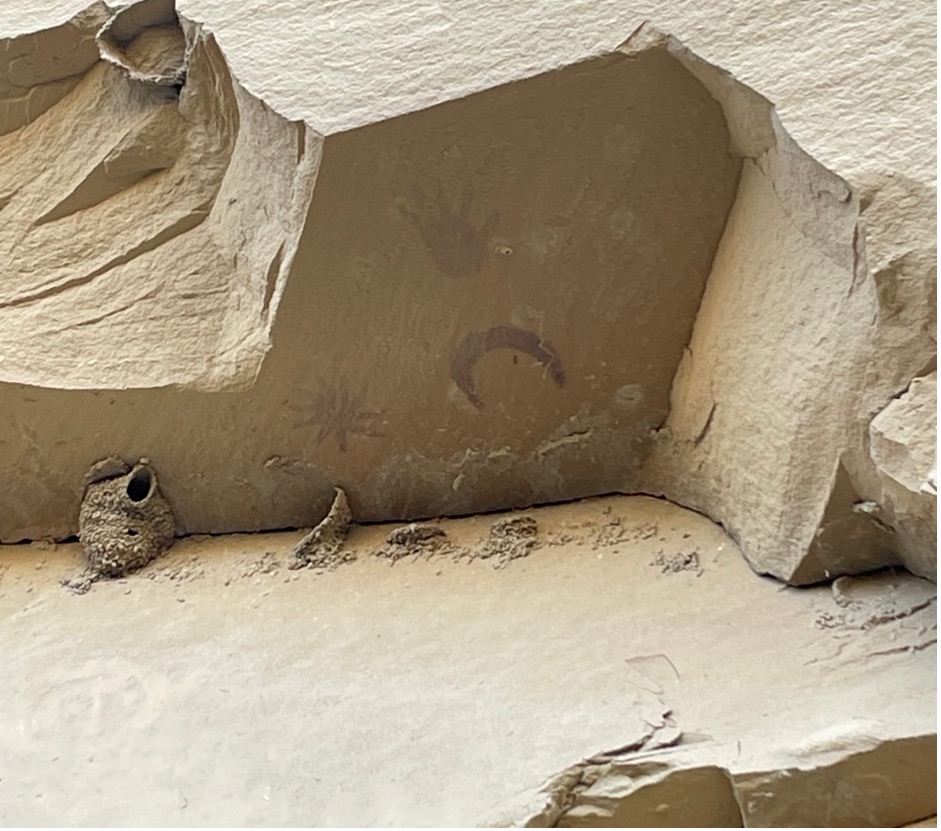
Petroglyphs along trail to Peñasco Blanco. (left and center)
These pictographs are drawn on a nearly flat, vertical stone. Referred to as “Supernova”, it is thought to represent the stellar explosion in 1054 CE recorded by Chinese and Japanese observers. To the bottom left of the image, is speculated to represent Halley’s comet which occurred 12 years after the supernova of 1054.4 (right)
I had an amazing experience volunteering at Chaco Canyon and would be so excited to do it again. If you are interested in volunteering for the National Park Service, explore opportunities here! https://www.nps.gov/subjects/volunteer/index.htm
- Most information in the following paragraph was found at: National Park Service (2015). Chaco Culture History & Culture. https://www.nps.gov/chcu/learn/historyculture/index.htm
- National Park Service (2020). Chaco Culture Paleontology. https://www.nps.gov/chcu/paleontology.htm#:~:text=Fossils%20found%20in%20the%20Cliff,vertebrate%20bones%2C%20and%20shrimp%20burrows.
- Watson, A. S. (2016). Long-distance wood procurement and the Chaco florescence. Proceedings of the National Academy of Sciences, 113(5), 1118-1120.
- National Center for Atmospheric Research (2023). Supernova Pictograph. https://www2.hao.ucar.edu/education/prehistoric-southwest/supernova-pictograph
